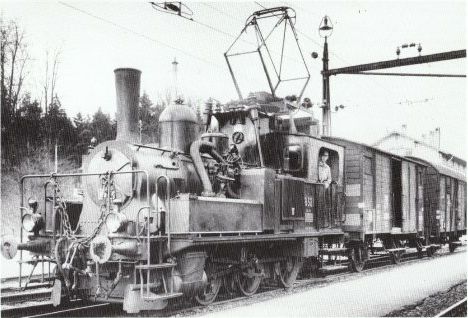Infantry99
Member
As of late I have been seeing a lot about these new ECO locomotives, one being hydrogen and the other being 100% electric which is honestly nothing more then a big battery on wheels. But it made me think back on older locomotive designs that could be in any way possibly considered eco friendly and I immediately went to steam locomotives. Which if you think about it steam locomotives are already 50% eco friendly since they already use one type of fuel that is considered a "renewable resource" being water. Which doesn't get used up like gas or diesel and is not dirty when it comes out of the stack as steam. As well as not being hard to find a source or never in short supply or even in high demand like fuels can be.
So basically all that leaves is a way to create enough heat to turn water to steam and anthracite coal burns around 900 degrees while electric heating coils can get up to around 1,200 degrees. That would solve the heating issue and since you would not be using coal you have a big empty space in the tender to put a big battery in to power the heater. I know just having a battery would not be enough and run out quickly so why not have like a solar panel above the battery to recharge it as the train goes? At that point you have a steam locomotive that only ever needs to stop for water.
Sounds like a win to me or maybe I am just trying to find a excuse to bring the old steam locomotives back while keeping everyone happy.
Plus in the amount of time I was thinking this all out as well as out looking on the internet at possible ideas and statistics I came across actual proof that the idea is not so bad in reality. That electric heat to boil water to steam actually works I had came across a old black and white picture of a small swiss 0-6-0 tank engine that had a large pantograph mounted on top of the cab. Ends up this was done due to coal shortages during the war but the country having tons of hydro electric power and in the end it worked very well with a little drop off in steam production all while giving the locomotive the capability to run like a fireless locomotive for 20 minutes.
So basically all that leaves is a way to create enough heat to turn water to steam and anthracite coal burns around 900 degrees while electric heating coils can get up to around 1,200 degrees. That would solve the heating issue and since you would not be using coal you have a big empty space in the tender to put a big battery in to power the heater. I know just having a battery would not be enough and run out quickly so why not have like a solar panel above the battery to recharge it as the train goes? At that point you have a steam locomotive that only ever needs to stop for water.
Sounds like a win to me or maybe I am just trying to find a excuse to bring the old steam locomotives back while keeping everyone happy.
Plus in the amount of time I was thinking this all out as well as out looking on the internet at possible ideas and statistics I came across actual proof that the idea is not so bad in reality. That electric heat to boil water to steam actually works I had came across a old black and white picture of a small swiss 0-6-0 tank engine that had a large pantograph mounted on top of the cab. Ends up this was done due to coal shortages during the war but the country having tons of hydro electric power and in the end it worked very well with a little drop off in steam production all while giving the locomotive the capability to run like a fireless locomotive for 20 minutes.


